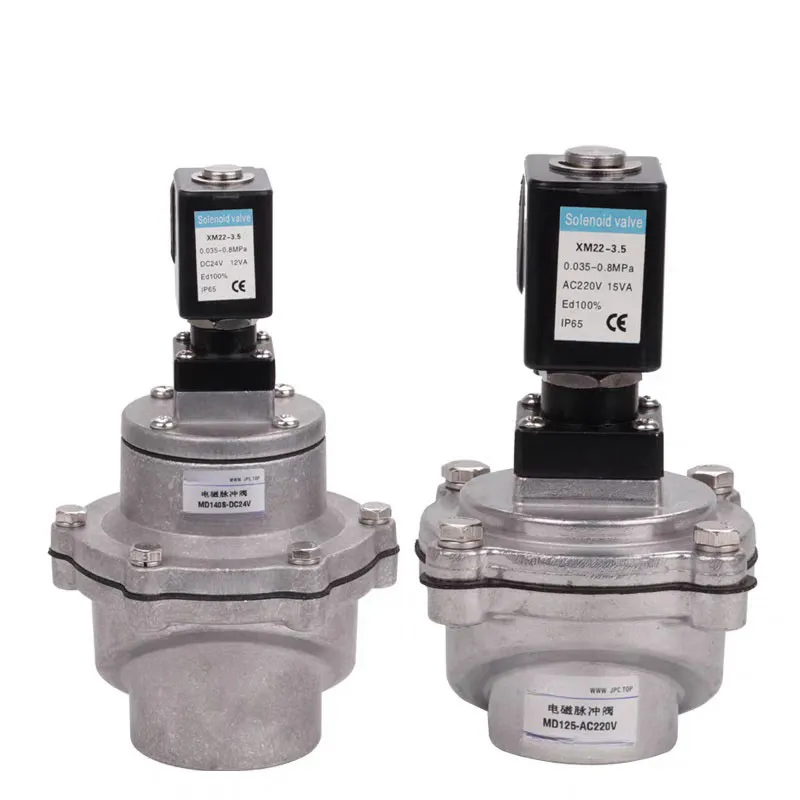How MD Pulse Valves Optimize Performance in Compressed Air Systems
2024-11-28
In industries where compressed air plays a central role, the efficiency and reliability of components like valves can make or break system performance. The MD Pulse Valve is a vital player in these systems, particularly in applications that require the controlled release of compressed air or gas. Known for its durability and precision, the MD Pulse Valve is designed to optimize system performance by controlling the timing and delivery of air pulses. In this blog, we’ll explore the function, benefits, and key applications of MD Pulse Valves in compressed air systems.
What Is an MD Pulse Valve?
The MD Pulse Valve, also known as a Medium Duty Pulse Valve, is designed to release pulses of compressed air in precise bursts. Unlike regular valves, which allow a continuous flow of air or fluid, pulse valves operate in short, controlled pulses. This functionality makes them ideal for applications such as dust collector cleaning, air filtration, and pneumatic systems where periodic bursts of air are needed to maintain or regulate airflow.
MD Pulse Valves are typically used in systems that require high pressure, precision, and rapid response times. They are often controlled by solenoids or pneumatic actuators, allowing them to automate the timing and release of air pulses. The use of MD Pulse Valves in these applications ensures efficient system operation, reduces energy consumption, and minimizes wear on components.
How Does the MD Pulse Valve Work?
MD Pulse Valves use a simple yet highly effective mechanism to regulate compressed air. The valve consists of a solenoid or diaphragm actuator that opens and closes rapidly, releasing air in short bursts. This pulse control system is designed to meet the demands of industrial processes that require bursts of air to clean filters, clear blockages, or regulate airflow.
1. Air Supply:
Compressed air is supplied to the system, typically from an air compressor or pneumatic system.
2. Triggering the Pulse:
The solenoid or actuator in the pulse valve is triggered by a control signal. This action opens the valve briefly, releasing a burst of compressed air into the system.
3. Quick Reset:
After each pulse, the valve closes quickly to stop the airflow, ensuring the air is only released as needed. The system then resets and prepares for the next pulse, if required.
4. Precise Airflow Control:
The rapid opening and closing of the valve create a precise, controlled burst of air. This process can be repeated at regular intervals based on the system’s requirements.
Key Benefits of MD Pulse Valves
1. Improved System Efficiency:
The MD Pulse Valve’s ability to release compressed air in precise bursts rather than a continuous flow enhances overall system efficiency. This results in lower energy consumption, as the system only uses air when it’s required, rather than constantly running.
2. Enhanced Performance:
In applications like dust collection, where maintaining filter cleanliness is crucial, the MD Pulse Valve helps keep the system running smoothly by providing regular pulses of air to clean filters. This prevents blockages and ensures optimal performance.
3. Reduced Wear and Tear:
By releasing short, controlled bursts of air, the MD Pulse Valve minimizes the stress on components. This reduces wear and tear on other parts of the system, extending the life of the equipment and lowering maintenance costs.
4. Cost Savings:
The efficient use of compressed air, combined with the reduced need for maintenance, results in cost savings. Systems that use MD Pulse Valves often experience lower operational costs, making them a valuable investment in industries where air management is key.
Applications of MD Pulse Valves
1. Dust Collection Systems:
One of the most common applications of MD Pulse Valves is in dust collection systems. In these systems, pulse valves are used to release bursts of air to clean filter bags and ensure the system remains effective. Regular cleaning helps maintain high filtration efficiency, preventing dust accumulation and system clogs.
2. Pneumatic Conveying:
In pneumatic conveying systems, where air is used to move materials like powders and pellets, MD Pulse Valves help regulate the flow of air. The valve’s precise control ensures smooth operation and prevents material build-up or blockages in the pipes.
3. Air Filtration Systems:
In air filtration applications, pulse valves are used to periodically clean filters by releasing high-pressure air. This is particularly important in environments where air quality must be maintained at high levels, such as in pharmaceutical or food processing industries.
4. Valve Control Systems:
MD Pulse Valves also play a role in automated valve control systems, where precise timing of air pulses is needed to control the opening and closing of valves. This allows for automation of complex systems, improving overall process control and reducing the need for manual intervention.
The MD Pulse Valve is an essential component for optimizing compressed air systems. By delivering controlled bursts of air, these valves improve system efficiency, performance, and longevity. Their ability to manage air pulses with precision makes them indispensable in applications such as dust collection, pneumatic conveying, and air filtration. With their energy-saving capabilities, durability, and reliability, MD Pulse Valves are a valuable investment for industries looking to improve system performance and reduce operational costs.



